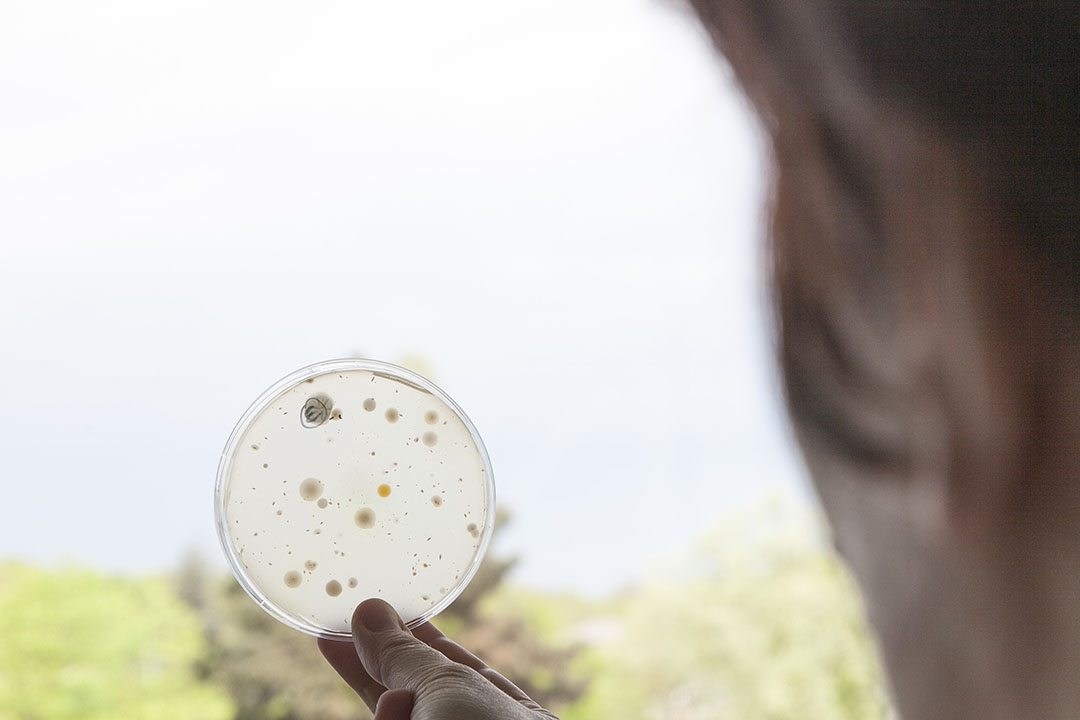Dietary solution to combat NE challenge

In the industry’s battle to keep reducing the use of antibiotics in poultry production, ‘prevention’ is the key word; alongside good farm management, high level biosecurity and high feed quality. These factors are all required to prevent physiological disorders, helping to make birds healthier, more resilient and therefore less likely to require antibiotics.
Poultry producers across the world are united in their commitment to massively reduce the industry’s dependence on antibiotics, especially the need to move away from the sector’s historic use of antibiotic growth promoters (AGP) to improve weight gain, boost feed conversion rates and control diseases. With AGPs already having been banned from use in poultry production in different countries/areas, eg. Europe since 2006, and with the additional use of antibiotics in a preventative capacity also being cut sharply, the industry’s search for alternative solutions to poultry health and disease problems has continued to intensify.
Positive impact of selected yeast fraction
While fully agreeing with the need for policy change concerning AGPs, farmers have inevitably had to cope with a gradual, but worrying, re-emergence of disease issues, often resulting in reduced performance figures and rising mortality rates. Post-AGP pressures have been particularly challenging for poultry producers with necrotic enteritis (NE), caused by Clostridium perfringens (C. perfringens), reappearing as a deeply debilitating problem within broiler production units.
In addition to working hard to reduce disease issues at source by improving on-farm biosecurity measures and management practices, the industry has also explored the potential inclusion of yeast-based products in feeding rations to boost birds’ natural defences against the sector’s re-emerging diseases. Yeast fractions, for example, such as Safmannan, are known to positively influence gut microflora, gut morphology and immunity. Developed by Phileo by Lesaffre, the product is rich in mannans and β-glucans (1,3 and 1,6) and has been independently demonstrated by global institutions to help reduce pathogen pressure in growing poultry, promote beneficial gut function and support birds’ natural defences against disease attacks.
According to a trial carried out by Professor Michael Sims of the Virginia Diversified Research Corporation, Virginia, USA, adding yeast fractions as a dietary supplement to poultry feed rations provides sufficient nutritional assistance to broilers to enable them to perform at the same level, when challenged with NE, as birds given bacitracin methylene disalicylate (BMD), a Type A medicated antibacterial. That’s all without the risk, of course, of increasing AMR for either birds or consumers.
To evaluate the effect of the yeast-based product in response to a NE challenge, the Virginia trial was set up to compare bird performance between 4 treatment groups of broilers, each of which was subjected to a different set of infection conditions and controls. The 4 groups consisted of:
- a non-supplemented non-infected control (UUC);
- a non-supplemented infected control (UIC);
- a BMD supplemented group, and
- a group supplemented with Safmannan.
A total of 1,440 male Ross 308 birds were used in the trial, randomly divided between the 4 treatments. Each treatment was faced by 360 birds, sub-divided into 12 batches of 30 birds each.
Response to NE challenge
To create a first basis for the NE-model, naive 4-day old chicks were exposed to a mild challenge by the introduction of used litter. Birds in the UIC, BMD and Safmannan groups were orally inoculated with 1×109 CFU of C. perfringens on days 16, 17 and 18. When assessed at day 21, following on from the birds being challenged with C. perfringens, a significant decrease in body weight was recorded between the UIC and UUC groups, alongside increases in FCR and NE lesion scores, all of which confirmed that the NE-model was working effectively. The day 21 results also showed that infected birds, whose feed had been supplemented with either BMD or Safmannan, had no significant difference in body weight, FCR or mortality, when compared with the UUC group. There was a significant decrease in lesion score, however, between the supplemented groups and the non-supplemented UIC group. For the remainder of the trial, which continued until day 42, significant differences were noted in body weight and FCR, with the BMD and Safmannan groups returning values that were statistically equivalent to the UUC group but significantly different from the UIC group. This finding confirmed that the supplemented diets largely overcame the clostridial challenge.
The overall conclusion was that while the trials showed that broilers, when exposed to used litter and C. perfringens, recorded significantly lower performance than uninfected controls, as would be expected, dietary supplementation with yeast fractions was equal in effectiveness to BMD in reducing lesion scores and improving zootechnical performance. Compared to the UIC group, the yeast product group got an improvement of 19 points in FCR (2.10 and 1.91, respectively) and an increase of 130g in final body weight (1.77 kg and 1.90 kg, respectively), see Figure 1. Both products also displayed significant gains in terms of reduced mortality rates, with Safmannan on 4.17% and BMD on 3.05%, both massively better than the UIC group’s 11.38% mortality rate.
Prevention is key for the future
Phileo by Lesaffre has also created a ‘Program post-antibiotic’ as a way of informing poultry producers of the benefits of its range of yeast-based solutions, in relation to reducing their use of antibiotics. Alongside Safmannan in the program are three other yeast products; Safglucan, Nucleosaf and Selsaf. While there are many complementary benefits shared by the four products, each one also has something individual to contribute to the challenge of boosting stock health, reducing disease losses and lowering costs.
Safmannan has a broad range of benefit credentials, such as helping improve zootechnical performance, feed efficiency and litter quality; reducing pathogen pressures, preventing Clostridium challenge and creating better resilience to feed transition stress and heat stress. Key contributions from Safglucan, which is a highly purified source of beta-glucan (1,3 and 1,6), centre on helping enhance an immune response in birds and potentiating their response to vaccination. The special role for Nucleosaf, a premium yeast extract rich in nucleotides, focuses on the enhancement of gut development, alongside contributing to zootechnical performance and feed efficiency. Selsaf, a source of highly bioavailable organic selenium, also delivers zootechnical performance and feed efficiency benefits, alongside its special impact of promoting better resilience to oxidative stress.
Yeast-based solutions are shown to be equipped to play a growing role in the poultry industry’s reduced dependence on antibiotics, with the Phileo ‘Program post-antibiotic’ initiative targeting the increased resilience of the birds to disease attacks, enabling producers to achieve a successful transition to post-antibiotic farming.
Author: Alain Riggi, Global Poultry Manager, Phileo by Lesaffre







